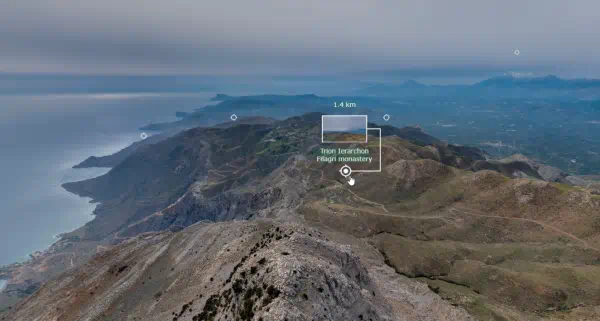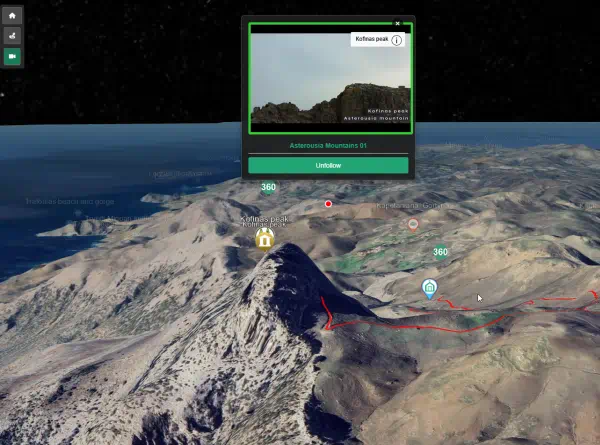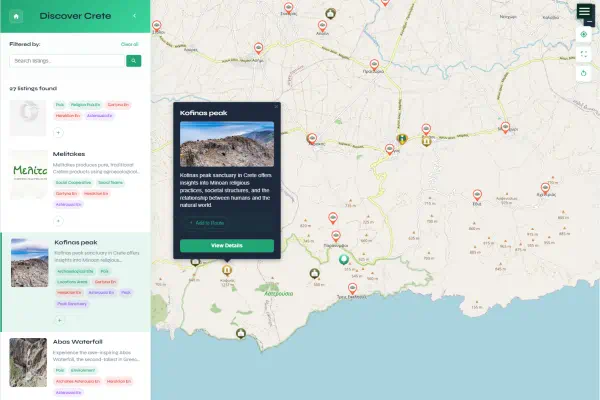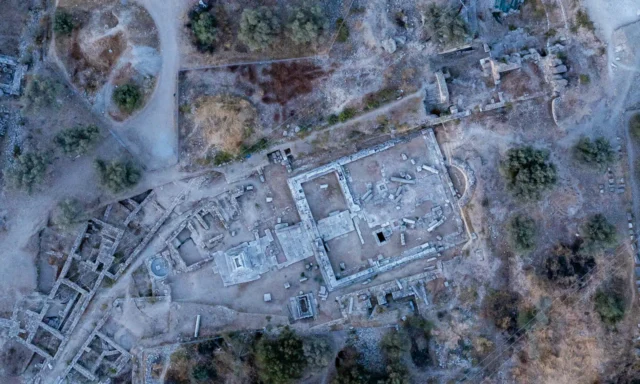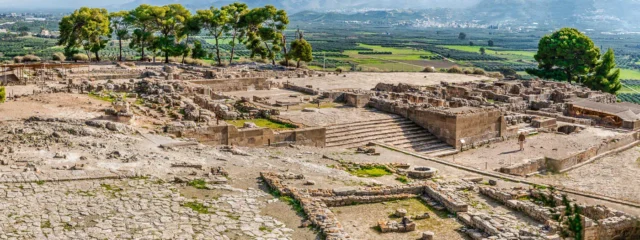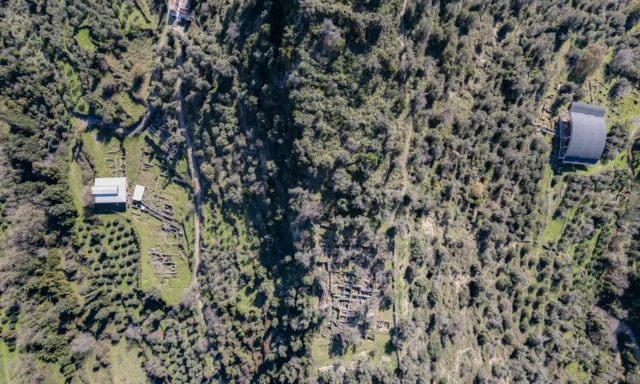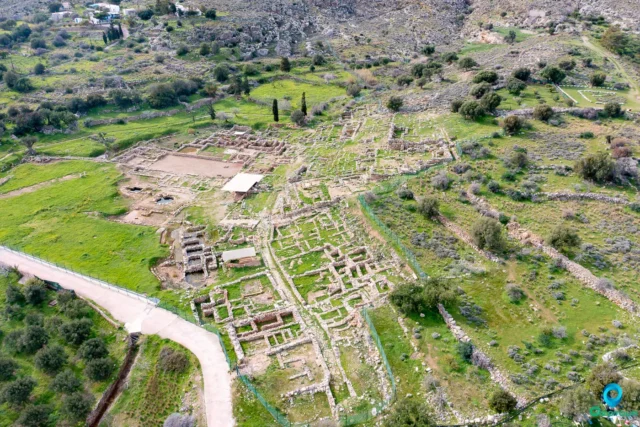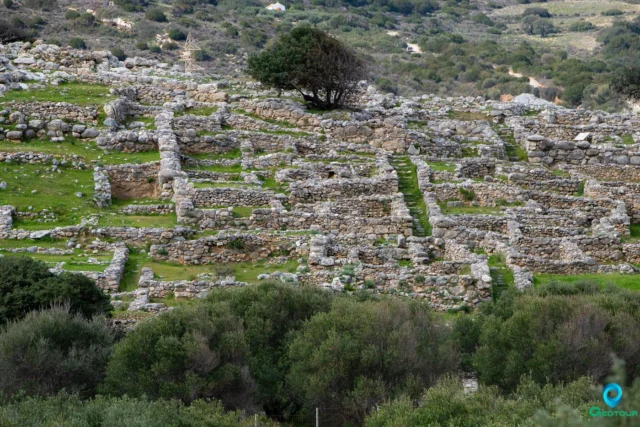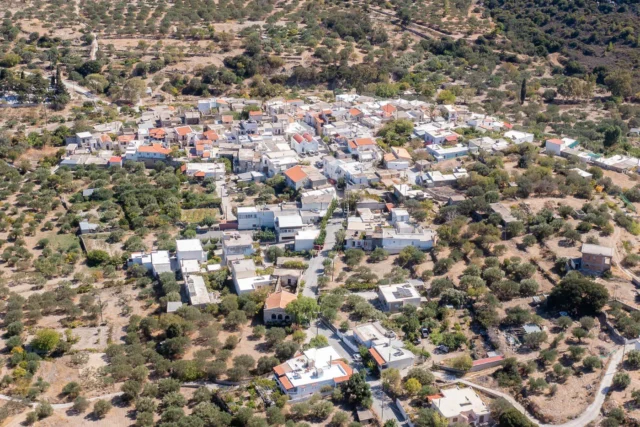Vasiliki is a village in the Community of Pahia Ammos, in the Municipality of Ierapetra, in Lasithi, Crete. It is located in the northern part of the isthmus of Ierapetra, 2.5 kilometers from Pahia Ammos and 11 kilometers from Ierapetra.
Minoan Settlement
On the Kastelli hill, 400 meters southeast of the village, a Minoan settlement has been discovered, dating from the Early Minoan II era (2600-2300 BC) to the Late Minoan I era (1550 BC). The geographical location of the settlement on the isthmus of Ierapetra and the fertile plain surrounding it contributed to its prosperity. The Minoan settlement of Gournia is located a short distance away. There are traces of habitation on the hill during Roman times.
The first excavation of the settlement was carried out by the American archaeologist Harriet Boyd and then by the American archaeologist Richard Seager in 1904-1906. Systematic excavation of the site continued in 1970 by Antonis Zois, on behalf of the Greek Archaeological Society, when cleaning and stratigraphic research of the older excavation was carried out, and written vessels of great interest were discovered in the material of the previous excavation. Also, the existence of a Mycenaean fortification and aqueduct, perhaps of the early Christian era, was confirmed.
Most of the Proto-Minoan vases with the distinctive shape and mottled appearance, known as Vasiliki-style vases, come from this archaeological site.
Modern Settlement
The oldest mention of the settlement is in the Turkish census of 1671, where it is mentioned as Vasiliki with two haracs, but the village is believed to have existed since the Venetian rule. In the Egyptian census of 1834, it is mentioned that 25 families lived in it. In 1881 it was included in the municipality of Kavousi and had 164 Christian and 65 Muslim inhabitants, while in the census of 1900 it had 248 inhabitants. In 1920 it was designated as the seat of a homonymous community, but in 1925 it was integrated into the community of Kavousi and in 1928 into the community of Pahia Ammos. In 1997 it was annexed to the municipality of Ierapetra.
Culture and Traditions
The village of Vasiliki is located on the eastern side of the small hill “Kefala”, in the center of the Lasithi regional unit, 21 kilometers from Agios Nikolaos and 12 kilometers from Ierapetra. The archaeological settlement of Vasiliki, one of the first Minoan settlements with urban planning, occupies the slopes and the top of the low hill located near the village, very close to the Minoan settlement of Gournia. Its prosperity is due not only to its important position, from where the Isthmus of Ierapetra is crossed, but also to the fertile plain of the area. The central building of the settlement was destroyed by fire around 2300 BC, but later there was a reoccupation of the hill and traces of habitation during Roman times have been found.
Vasiliki is located in the Lasithi regional unit, 12 km from Ierapetra. It is not mentioned in the Venetian censuses. However, it certainly existed because it is mentioned in the Turkish census of 1671. In 1834 it had 25 Christian families. In 1881 it had 164 Christians and 65 Turkish inhabitants. At the beginning of the 19th century it numbered over 650 inhabitants, while today they do not exceed 100.
Near the village there was an early Minoan settlement where Miss Boyd and R. Seager in 1906 excavated some houses built and plastered internally with red color. It is a small palace, a miniature of those of Knossos, Zakros and Phaistos Mallia. Probably with a central courtyard with 4 corners facing the 4 points of the horizon. Orientation common in Mesopotamia and the Middle East from where it seems that the first settlers came from the Proto-Minoan period (2300-2100 BC). Unfortunately, the area of the palace is destroyed and only the foundations of its SW and SE corners were saved. It consists of rectangular rooms that communicated with each other through internal corridors. The settlement of Vasiliki, one of the first Minoan settlements with urban planning, occupies the slopes and the top of a low hill located near the village of Vasiliki, very close to the Minoan settlement of Gournia. It begins its existence in the Proto-Minoan II era (2600-2300 BC) and owes its prosperity not only to its important position, from where the crossing of the Isthmus of Ierapetra is made, but also to the fertile plain of the area. The central building of the settlement was destroyed by fire around 2300 BC. However, there was a later reoccupation of the hill, and a Middle Minoan building (2200-1900 BC) as well as traces of habitation during Roman times have been discovered.
Settlement: Key Points
- Historical References: Minoan settlement, Roman presence, Turkish census (1671), Egyptian census (1834).
- Location: Northern part of the isthmus of Ierapetra, Lasithi, Crete.
- Historical Significance: Important Minoan settlement, known for Vasiliki-style pottery.
- Current Status: Village in the municipality of Ierapetra.
Year |
Population |
Notes |
|---|---|---|
1583 |
||
1671 |
Turkish Census, two haracs |
|
1834 |
Egyptian Census, 25 families |
|
1881 |
229 |
164 Christians, 65 Muslims |
1900 |
248 |
|
1920 |
291 |
|
1928 |
321 |
|
1940 |
349 |
|
1951 |
375 |
|
1961 |
353 |
|
1971 |
299 |
|
1981 |
245 |
|
1991 |
191 |
|
2001 |
133 |
|
2011 |
72 |
|
2021 |
50 |
References

